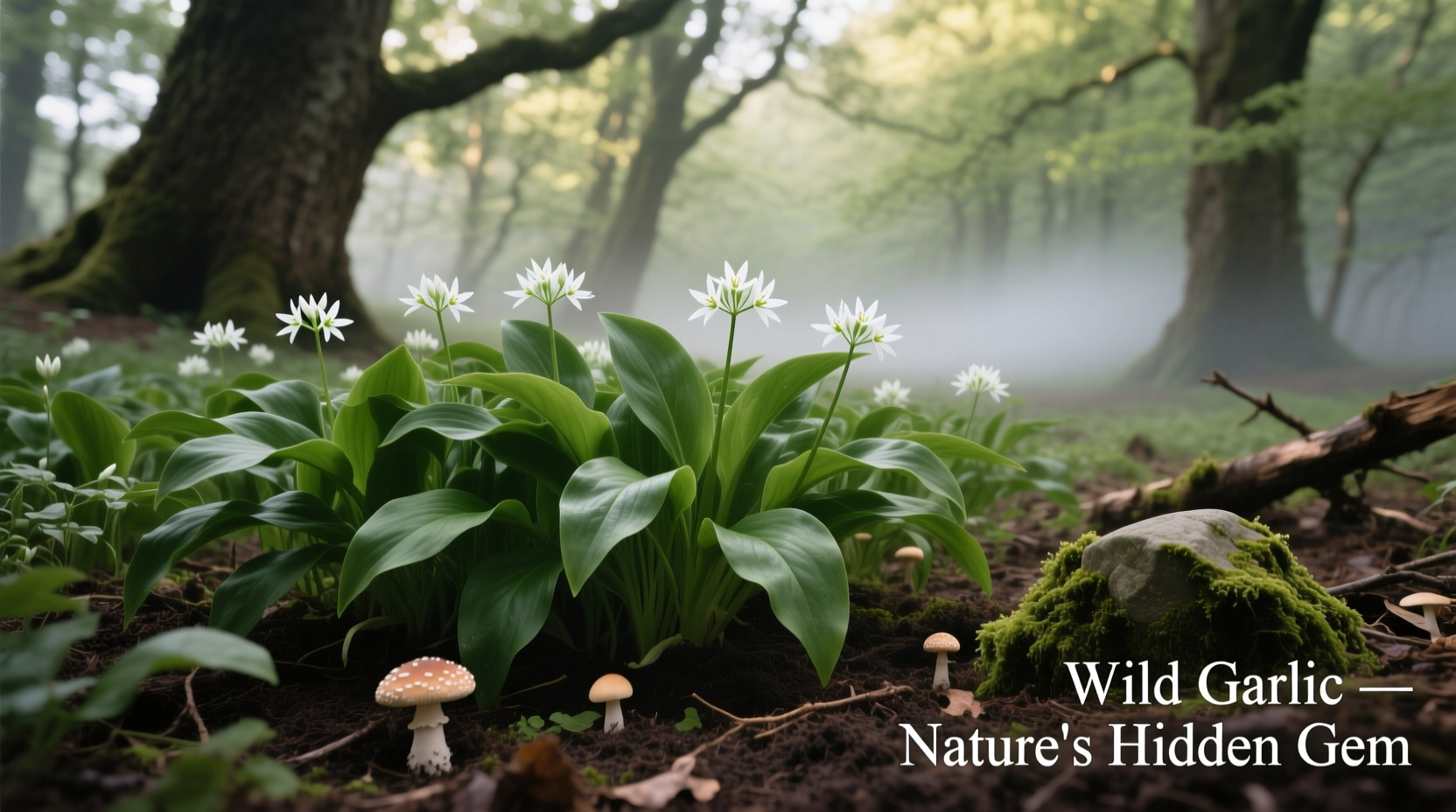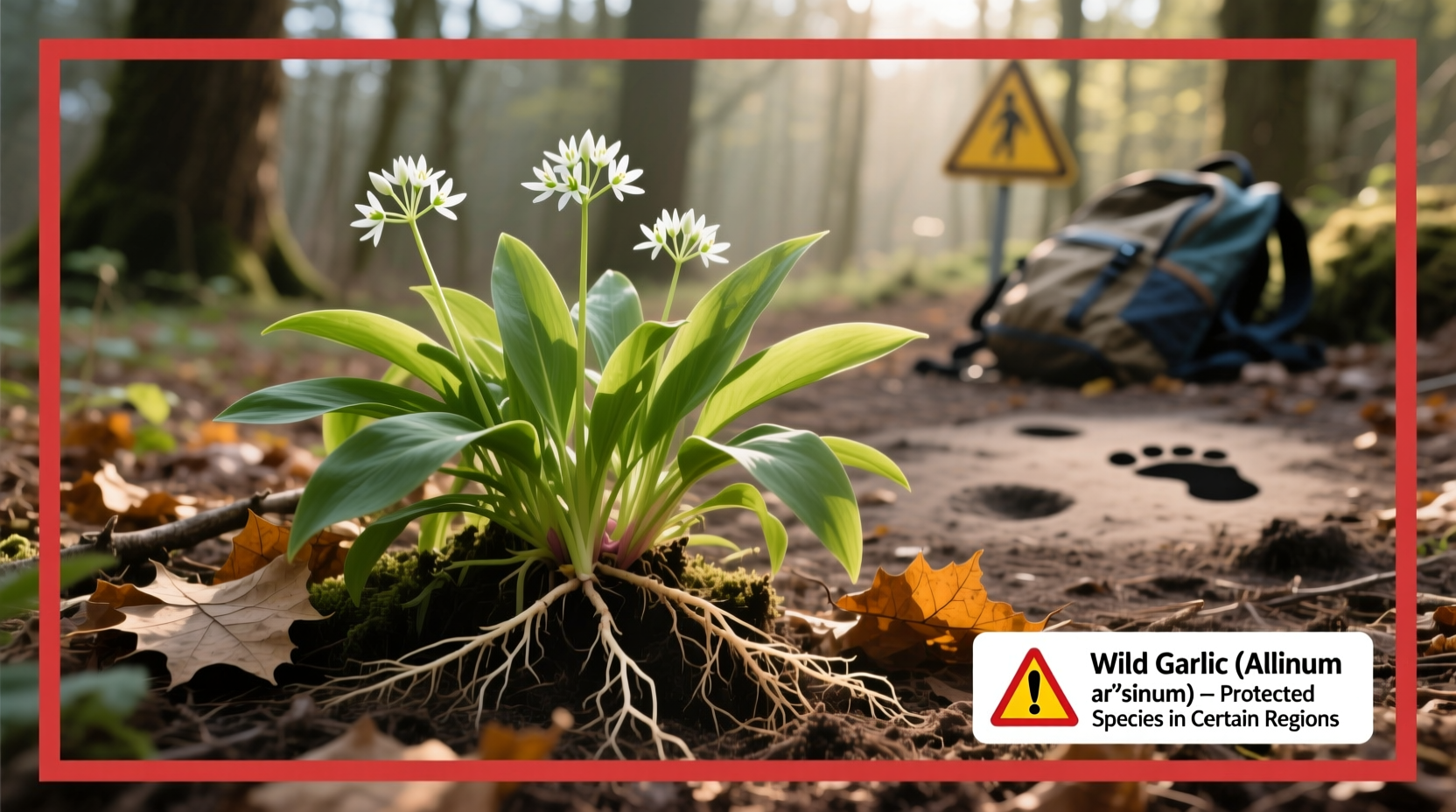Understanding the Wild Garlic Legal Misconception
When you search "why is wild garlic illegal," you're likely encountering a widespread misunderstanding. Wild garlic itself isn't prohibited—what's regulated are how and where you harvest it. This distinction matters because millions safely forage wild garlic annually when following local regulations. Let's clarify the actual legal landscape.
Why People Think Wild Garlic Is Illegal
The confusion typically arises from three sources:
- Misinterpreted conservation laws – Many confuse general plant protection regulations with blanket bans
- Social media misinformation – Viral posts often oversimplify complex foraging rules
- Regional variations – Strict rules in one country get reported as universal prohibitions
Wild Garlic Harvesting Laws by Region
Legal status varies significantly depending on your location. Here's what authoritative sources confirm:
| Region | Legal Status | Key Restrictions | Source |
|---|---|---|---|
| United Kingdom | Legal to forage | Uprooting prohibited without landowner permission (Wildlife and Countryside Act 1981) | UK Government |
| Germany | Legal with limits | Maximum 300g per person; prohibited in nature reserves (Federal Nature Conservation Act) | BMUV |
| United States | Varies by state | National parks prohibit all foraging; state forests have specific regulations | National Park Service |
| Canada | Generally permitted | Provincial parks restrict harvesting; private land requires permission | Environment Canada |
Why Harvesting Restrictions Exist
Conservation laws targeting wild garlic harvesting serve critical ecological purposes:
Protecting Biodiversity Hotspots
Wild garlic often grows in ancient woodlands that host rare species. According to Plantlife International's 2023 habitat assessment, 87% of UK ancient woodlands contain wild garlic populations that support specialized insect communities. Unregulated harvesting damages these fragile ecosystems.
Preventing Overharvesting
The Royal Horticultural Society documents that wild garlic takes 3-5 years to regenerate after bulb disturbance. Their field studies show that bulb removal reduces colony survival rates by 73% compared to leaf-only harvesting.

How to Forage Wild Garlic Legally and Responsibly
Follow these evidence-based guidelines from conservation authorities:
Harvesting Best Practices
- Take only leaves – Never dig up bulbs (UK Wildlife Trusts recommendation)
- Limit your harvest – Take no more than 10% of any patch (Plantlife standard)
- Use proper tools – Scissors prevent root damage compared to pulling (RHS guideline)
- Check local regulations – National park rules override general allowances
Identifying Legal Foraging Locations
Before harvesting, verify these critical factors:
- Whether the land is protected (SSSI, National Park, etc.)
- If you have landowner permission for private property
- Seasonal restrictions (most areas prohibit harvesting after June)
- Whether the patch shows signs of previous overharvesting
Common Legal Misunderstandings Clarified
Let's address frequent misconceptions with verified facts:
"Wild garlic is protected like bluebells"
While both grow in woodlands, wild garlic lacks specific species protection. The restrictions apply to all wild plants under general conservation laws, not wild garlic specifically. The Wildlife and Countryside Act 1981 protects all wild plants from uprooting without permission—not just rare species.
"You can get fined for picking wild garlic"
Fines apply only for violating specific conditions: uprooting plants, harvesting in protected areas without permission, or commercial harvesting without licenses. Responsible leaf harvesting on public land typically faces no penalties.
Practical Foraging Checklist
Before heading out, ensure you've completed these steps:
- Verified local regulations through official channels
- Confirmed you're harvesting leaves only, not bulbs
- Identified the patch as containing at least 50 plants
- Prepared clean scissors and containers
- Checked that no conservation notices exist for the area
When Wild Garlic Harvesting Becomes Illegal
These specific actions cross legal boundaries according to conservation authorities:
- Uprooting plants on any land without explicit permission
- Harvesting in Sites of Special Scientific Interest (SSSIs)
- Commercial harvesting without proper licensing
- Harvesting in national parks (US, Canada, UK)
- Damaging protected habitats while accessing plants
Responsible Foraging Resources
Consult these authoritative sources before harvesting:
- Plantlife's Forage Wisely campaign
- Wildlife Trusts foraging guidelines
- Your state/provincial department of natural resources website
- Local foraging groups affiliated with conservation organizations











 浙公网安备
33010002000092号
浙公网安备
33010002000092号 浙B2-20120091-4
浙B2-20120091-4